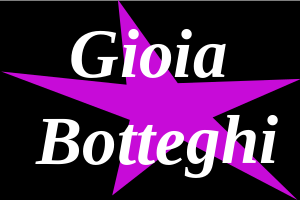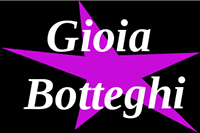Istruzioni per la ricerca di immagini
 Ricerca standard: estrae le immagini che soddisfino la parola di ricerca, anche se essa è parte di una parola più lunga, esempio digitando “rossi” troverà tutte le immagini che avranno nella didascalia la parola che inizia con “rossi“, quindi nei risultati appariranno le immagini che contengono anche come “rossini”, “rossinelli”, etc.
Ricerca standard: estrae le immagini che soddisfino la parola di ricerca, anche se essa è parte di una parola più lunga, esempio digitando “rossi” troverà tutte le immagini che avranno nella didascalia la parola che inizia con “rossi“, quindi nei risultati appariranno le immagini che contengono anche come “rossini”, “rossinelli”, etc.
Se si cerca una immagine digitando nome e cognome del soggetto da trovare è meglio inserire la stringa di ricerca tra virgolette in modo da avere risultati puntuali, ad esempio se io voglio cercare le immagini relative ad Oliver Stone è meglio scrivere “Oliver Stone” tra virgolette perchè omettendo le virgolette il programma estrae anche tutte le immagini che contengono uno solo dei due termini e quindi apparirebbero anche le immagini di tutti coloro che si chiamano Stone (quindi anche di Sharon Stone, Emma Stone o altri) e di tutti quelli che si chiamano Oliver.
 Ricerca avanzata: le ricerche avanzate cercano una combinazione libera di stringhe di ricerca. Esempio, digitando +baudo +conti cercherà le immagini che hanno nella didascalia della foto entrambi i termini. i campi dovranno essere digitati, separati da uno spazio con un operatore ” + ” tra i vari termini di ricerca. Le ricerche avanzate possono anche utilizzare l’operatore di esclusione “– “, es. la stringa di ricerca +città +strada -auto cercherà tutte le immagini che nelle didascalie avranno la parola “città” e “strada” ma escluderà dai risultati quelle che avranno anche il termine “auto“.
Ricerca avanzata: le ricerche avanzate cercano una combinazione libera di stringhe di ricerca. Esempio, digitando +baudo +conti cercherà le immagini che hanno nella didascalia della foto entrambi i termini. i campi dovranno essere digitati, separati da uno spazio con un operatore ” + ” tra i vari termini di ricerca. Le ricerche avanzate possono anche utilizzare l’operatore di esclusione “– “, es. la stringa di ricerca +città +strada -auto cercherà tutte le immagini che nelle didascalie avranno la parola “città” e “strada” ma escluderà dai risultati quelle che avranno anche il termine “auto“.
N.B. Per affinare la ricerca è consigliabile aggiungere come parametro di ricerca anche l’anno, es. +”Lorella Cuccarini” +2016 estrarrà tutte le immagini riferite a Lorella Cuccarini scattate nel 2016. Allo scopo di migliorare i tempi di risposta delle richieste verranno visualizzate le prime 500 immagini che soddisfano i parametri inseriti, quindi è molto importante che la ricerca sia dettagliata al massimo.
Search images instructions
 Standard search: extracts the images that match the search word, even if it is part of a longer word, for example by typing “rossi” it will find all the images that have the word starting with “rossi” in the caption, therefore the images that also contain as “rossini”, “rossinelli”, etc.
Standard search: extracts the images that match the search word, even if it is part of a longer word, for example by typing “rossi” it will find all the images that have the word starting with “rossi” in the caption, therefore the images that also contain as “rossini”, “rossinelli”, etc.
If you search for an image by typing the name and surname of the subject to find it is better to insert the search string in quotation marks in order to have precise results, for example if I want to search for images relating to Oliver Stone it is better to write “Oliver Stone” in quotation marks because by omitting the quotation marks the program also extracts all the images that contain only one of the two terms and therefore the images of all those called Stone (therefore also of Sharon Stone, Emma Stone or others) and of all those called Oliver.
 Advanced search: advanced searches search for a free combination of search strings. For example, typing +baudo +conti (separated by a space) will search for images that have both terms in the photo caption. The fields must be typed, separated by a space with a ” + ” operator between the various search terms. Advanced searches can also use the exclusion operator “–“, e.g. the search string +city +road -car will search for all the images that have the word “city” and “road” in the captions but will exclude from the results those that also have the term “car“.
Advanced search: advanced searches search for a free combination of search strings. For example, typing +baudo +conti (separated by a space) will search for images that have both terms in the photo caption. The fields must be typed, separated by a space with a ” + ” operator between the various search terms. Advanced searches can also use the exclusion operator “–“, e.g. the search string +city +road -car will search for all the images that have the word “city” and “road” in the captions but will exclude from the results those that also have the term “car“.
N.B. To refine the search it is advisable to also add the year as a search parameter, e.g. +”Lorella Cuccarini” +2016 will extract all the images referring to Lorella Cuccarini taken in 2016. In order to improve response times for requests, the first 500 images that satisfy the parameters entered will be displayed, so it is very important that the search is detailed to the utmost.


